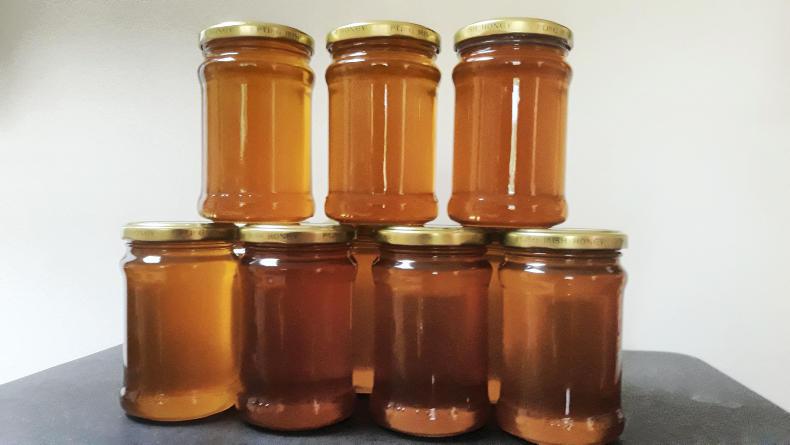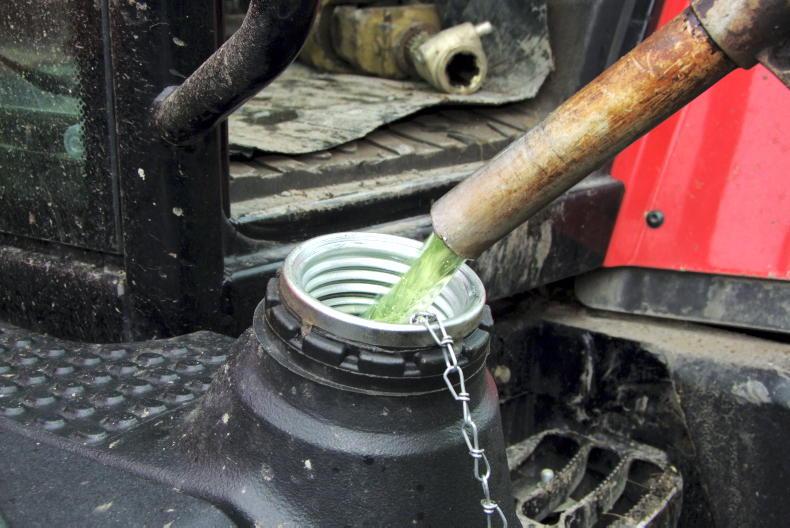What a finish to the beekeeping season! The cool dull weather earlier held bees back and with that the outlook appeared poor.
The prospect of getting queens mated, or, for that matter, getting a crop of honey, did not look good. The Latin saying, “nil desperandum” (never despair) is certainly true, as we held out the hope of a change in weather fortunes.
The good spell in July did come and did provide excellent conditions for a nectar flow from the blackberry and clover. The year’s work of maintaining colonies in peak condition paid off as the bees collected nectar from these flowers, ensuring a honey crop.
Given the dry warm conditions during the peak of the blackberry flowering, the nectar collected from it would have been at its best moisture content, making the work of final drying within the hive easy on the bees.
The hum from beehives, on a summer’s evening, comes from the drying process of nectar by bees within the hive. The circulation of air, by wing movement, removes excess moisture from nectar. Bees hold out nectar droplets on their tongue to aid drying, getting the moisture content somewhere about 17 - 19%.
Busy beekeepers
Beekeepers are now busy with the removal and processing of the honey crop. The art of stealing the bees'' hard won store of honey is much easier now than it was more than sixty years ago. The rapid clearing boards, placed below the super of honey ensures that the bees pass in one direction only into the brood box below, leaving the honey free of bees. Bee blowers are used by some and are more likely to suit the larger commercial beekeeper, since, it means a one trip journey to the apiary.
Having removed the honey supers from the hives, they should be transported to the processing building, ensuring good hygiene practice. The quality of honey should start in the hive and be maintained until sealed in the jar.
In the main, beekeepers use stainless steel equipment for processing honey. There is some plastic equipment available and in use as well. Only food grade plastic should be used.
Local honey
Once honey is bottled or packed as comb, it soon appears in the local market stalls and shops.
There are rules
governing labelling of
honey and they should be complied with. So often one sees honey with labels which appear to have refused ink, given their skimpy details. Labels should have the producer''s name, product description i.e. (heather honey, floral honey) weight, batch number and best before date etc.
The quality and flavour of Irish honey is well known. Consumers should seek out the 2022 crop in their local market and shops. Be aware that pure Irish honey commands a price. You cannot beat 100% pure Irish honey.
Read more
Busy season for beekeepers and buyer beware
Business diversification: bee supplement for fungus to an athlete’s foot spray
What a finish to the beekeeping season! The cool dull weather earlier held bees back and with that the outlook appeared poor.
The prospect of getting queens mated, or, for that matter, getting a crop of honey, did not look good. The Latin saying, “nil desperandum” (never despair) is certainly true, as we held out the hope of a change in weather fortunes.
The good spell in July did come and did provide excellent conditions for a nectar flow from the blackberry and clover. The year’s work of maintaining colonies in peak condition paid off as the bees collected nectar from these flowers, ensuring a honey crop.
Given the dry warm conditions during the peak of the blackberry flowering, the nectar collected from it would have been at its best moisture content, making the work of final drying within the hive easy on the bees.
The hum from beehives, on a summer’s evening, comes from the drying process of nectar by bees within the hive. The circulation of air, by wing movement, removes excess moisture from nectar. Bees hold out nectar droplets on their tongue to aid drying, getting the moisture content somewhere about 17 - 19%.
Busy beekeepers
Beekeepers are now busy with the removal and processing of the honey crop. The art of stealing the bees'' hard won store of honey is much easier now than it was more than sixty years ago. The rapid clearing boards, placed below the super of honey ensures that the bees pass in one direction only into the brood box below, leaving the honey free of bees. Bee blowers are used by some and are more likely to suit the larger commercial beekeeper, since, it means a one trip journey to the apiary.
Having removed the honey supers from the hives, they should be transported to the processing building, ensuring good hygiene practice. The quality of honey should start in the hive and be maintained until sealed in the jar.
In the main, beekeepers use stainless steel equipment for processing honey. There is some plastic equipment available and in use as well. Only food grade plastic should be used.
Local honey
Once honey is bottled or packed as comb, it soon appears in the local market stalls and shops.
There are rules
governing labelling of
honey and they should be complied with. So often one sees honey with labels which appear to have refused ink, given their skimpy details. Labels should have the producer''s name, product description i.e. (heather honey, floral honey) weight, batch number and best before date etc.
The quality and flavour of Irish honey is well known. Consumers should seek out the 2022 crop in their local market and shops. Be aware that pure Irish honey commands a price. You cannot beat 100% pure Irish honey.
Read more
Busy season for beekeepers and buyer beware
Business diversification: bee supplement for fungus to an athlete’s foot spray









SHARING OPTIONS